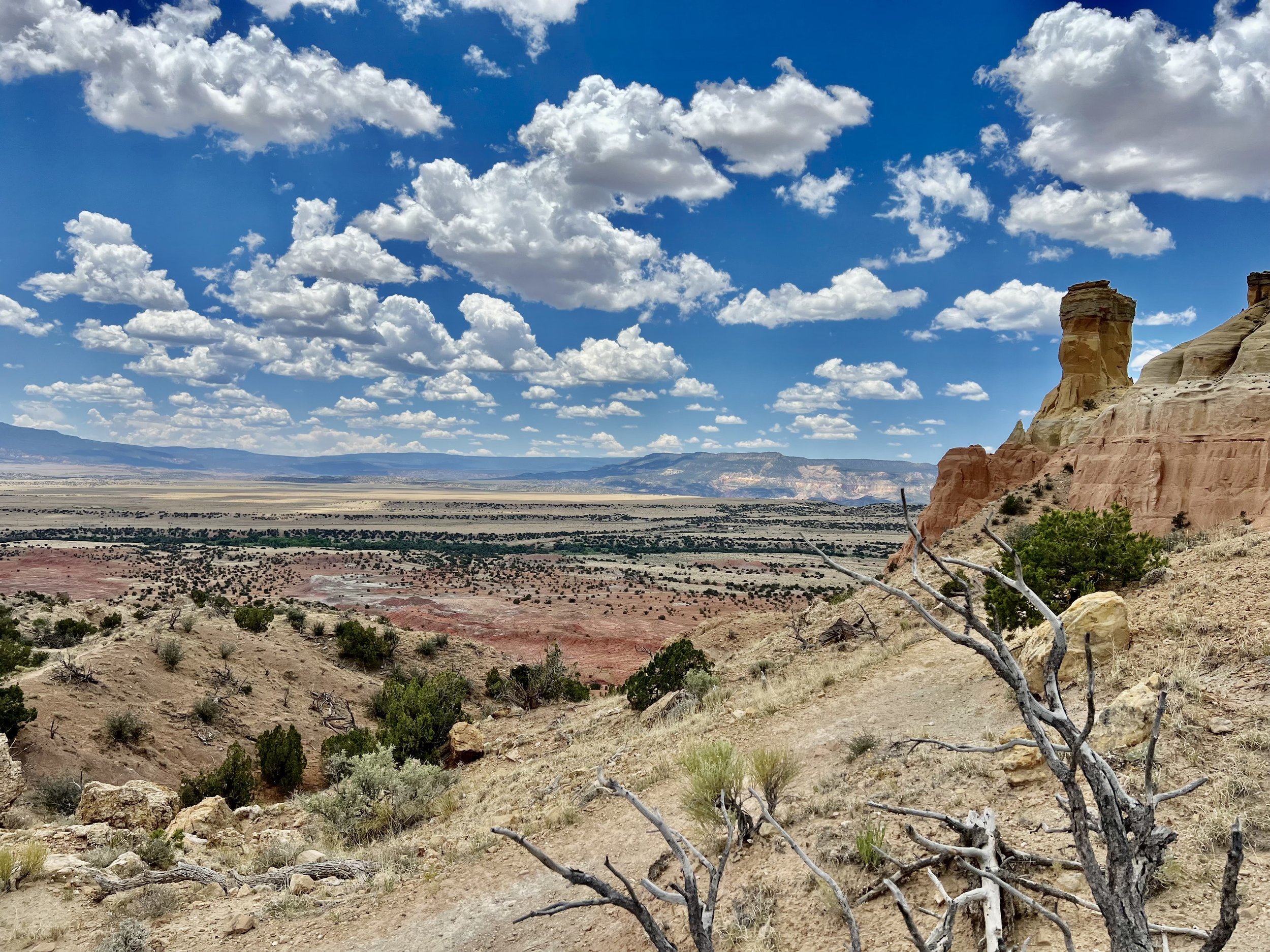The Quiet Desert of Solitude
Chimney Rock at Ghost Ranch
Monastery in the Judean wilderness
The desert can be an experience of isolation, bleakness, and despair, as discussed in the last post. This type of desert experience is typically involuntary and unwanted, something thrust upon us without our design. But not all deserts have to be this way. Isolation can be intentionally sought out for benefit, especially in the form of solitude. The desert has long been a place to seek out solitude for peace, simplicity, inspiration, and spiritual growth.
There are many examples from ancient and modern history of seeking solitude in the desert. In the Bible, John the Baptist did his preaching and baptizing in the Judean wilderness, dressing in camel’s hair and eating locusts and wild honey. Immediately after being baptized by John the Baptist, Jesus’ first action before beginning his public ministry was to go into the desert for 40 days and 40 nights. Having personally seen the Judean wilderness on a pilgrimage, I can attest that a retreat into this desert must have been no small feat, but certainly is a place to find solitude. Of course, any possible plan for quiet uninterrupted reflection on the part of Jesus was spoiled by Satan and his three attempts to tempt Jesus. But in part likely due to the clarity of purpose and focus that he was able to experience by fasting and praying in the desert, Jesus resisted these temptations and left the desert with the spiritual strength to start his mission.
In emulation of this experience, hermits and monks throughout the ages have sought out the desert as a place to escape the temptations of world and its chaos to focus on the spiritual life. One of the most famous was St. Anthony Abbot, who lived in the 4th century. He left a life of wealth and retreated to the Egyptian desert to seek a life of solitude and prayer. His reputation for holiness spread throughout the Mediterranean and drew many to seek his counsel and ultimately to imitate his lifestyle. He founded communities (monasteries) for those who adopted his lifestyle and is considered the father of monasticism.
In modern times, there are still monastic communities that live in the desert. Near Abiquiu, New Mexico, there is a Benedictine monastery called “Christ in the Desert,” which is off the grid in a desert canyon and only reachable by a remote dirt road, often inaccessible after rainstorms. The monks who live there must find this location to be a peaceful place to work and pray away from typical distractions of the outside world. Interestingly, located nearby is Ghost Ranch where artist Georgia O’Keeffe lived and painted many of her most famous landscape paintings. During a visit there this summer, my wife, puppy, and I were able to explore the beautifully stark and colorful landscape surrounding Ghost Ranch. Georgia O’Keeffe’s paintings came alive and it didn’t take any effort to feel a quiet peace in our souls…or the blazing sun on our backs!
That being said, for many of us seeking temporary solitude, real deserts can be hard to come by. Other circumstances or environs may suffice to achieve a similar gain. Like a quiet walk in the woods or on an empty beach. Maybe the best you can manage is a quiet room in your home (with the cell phone turned off!) for some meditation or reflection or prayer time. In any case, the need for solitude and respite from the noise of the world is something that we can all benefit from. Even if we must return to the “real world” of our daily lives at some point, the peace gained from solitude and quiet can replenish our spirits and cleanse our minds and hearts for the challenges that face us. Try taking a little time during the waning days of summer to find a place of solitude in your busy day, even if only for a few minutes. You might be surprised by what you find!

